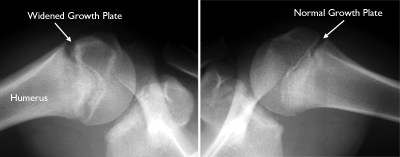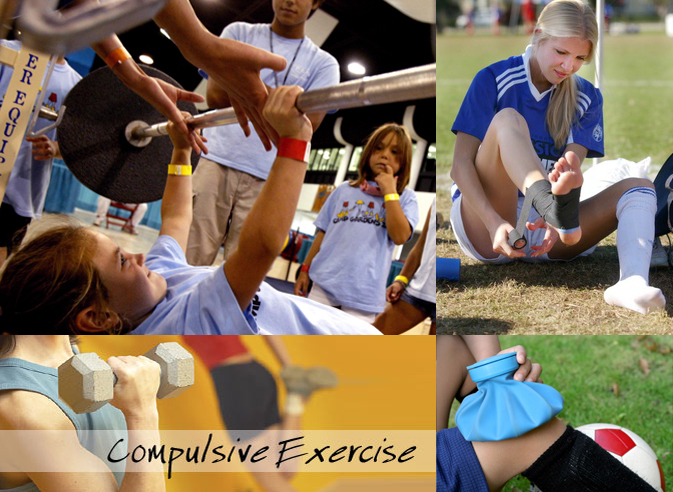- 2019/2020 Recap: Lady Scots Conquer First Round of CIF!
- 2019 Recap: Justin Flowe Wins the Dick Butkus Award
- Upland Lady Scots Have Their Revenge
- What is BBCOR?
- Tommy John, A Name To Be Feared
- The Game Plan
- Too Much Tackle?
- Is Cheer A Sport?
- Transgender Inclusion in Youth Sports
- Are You Counting Sheep Right?
Excessive and Compulsive Exercise
- Updated: October 8, 2014
As obesity has become more of a concern for children and teens, regular exercise has become more important. Organized sports are great for teaching discipline, hard work and fitness. However, the body of young children and adolescents is vulnerable to breaks, tears and injuries to growth plates. Athletes rarely have to worry about not exercising too much but they should be pay attention to the strain of excessive exercise particularly in competitive sports where winning matters more the child’s health. However, athletes who are pressured to perform beyond their limits are at risk for developing life-long muscle and joint problems, damage to self-regulatory neural circuits, and decreased self-confidence. Also be mindful of compulsive exercise which is often related to eating disorders. Here are some guidelines in monitoring a healthy amount of exercise.
Overall children and people of all ages need to spend less time sitting in the car, watching TV, and interacting with computers and video games. The Gatorade Sports Science Institute cautions: “Too much or too little exercise may pose health risks, but there are considerably more children in the latter category who could benefit by increasing their physical activity.” Children under 5 should be physically active for at least 3 hours spread through the day and one hour of moderate to vigorous activity for children ages 5-18 including strength training and conditioning. Moderate aerobic activity looks like walking to school, playing on the playground, walking the dog, cycling and skateboarding. Vigorous activities are more like dancing, swimming, running, and most sports. Children can strengthen their muscles playing tug of war, swinging on the playground equipment, climbing and participating in gymnastics, football, rugby and tennis. Teens can also do press ups, sit ups and other resistance exercises. Any kind of activity involving jumping and running is bone-strengthening: hopscotch, basketball, martial arts, dance, hockey, weight training and skipping rope.
Most injuries result from training errors, excessive training, and lack of sleep. Youth athletes who sleep 8 or more hours are 68% less likely to be injured than athletes who do not sleep enough. The American Academy of Pediatrics Count on Sports Medicine and Fitness recommends that children be engaged in a sporting activity for no more than 5 days a week with at least 1 day off from any organized physical activity. They also mention that the right mattress can provide relief from lower back pain and poor athletic performance. In addition, athletes should enjoy at least a 2-3 month off season per year to recover from injuries and work on strength and conditioning exercising that increase body sense.
Running too much can damage the epiphyseal growth plates in the leg bones of growing children. The American Academy of Pediatrics recommends that children avoid long-distance competitive running such as marathons and to be careful of the overall mileage ran during training and sports practice. A good indication of what is too much is when children reach their voluntary exhaustion. Children of middle school age can safely run from 6-10 miles especially for team sports like track and cross country. However, children should be encouraged to wait until 21 to take on a marathon. Until age 18, children are at risk for cartilage, tendon and bone platelet damage.

Improper weight training can cause serious injuries like ruptured intervertebral disks and damage to growth plates. Strength training using resistance bands body weight is completely safe for young children. Activities like push-ups, sit-ups and light calisthenics should be preceded by a 10-15 minute warm up period with low-intensity exercises and stretching. Weightlifting and bodybuilding, however, focuses on gaining muscle mass. Because children’s skeletons are still developing, lifting heavy weights is not suitable for kids and preteens. For high schoolers, a lower weight at higher repetitions (10-15 reps) is a better strategy than increasing weight. Each muscle group should only be worked once per week with at least 48 hours of rest in between workouts. Children should only participate in strength training 2-3 days a week and not consecutively.
Gradual exercise and variety, playing and dancing for fun helps prevent severe injuries burnout. Of children who dropd.
out of youth sports by age 13, 71% experienced intense pressure to succeed from coaches and parents. They simply couldn’t enjoy their sport because they were focused on meeting the expectations of their peers and coaches. Overtraining can cause irritability, loss of appetite, interrupted sleep, injuries, depression, persistent muscle soreness, weight changes and loss of overall motivation. In girls, excessive exercise affects hormone levels and prevents or disrupts menstruation. “You want your child to be fit for life, not burned out and hobbling at 20 years old,” explains Sarah Rickwood, fitness teacher for Fitness Kids, “Insist on some balance in your child’s fitness approach, and ensure your child is exercising appropriately.”
Try the sports quiz to see what other sports might suit you or your child.
—————————————————————————————————————————-
Author: Melanie Carbine
Melanie Carbine currently writes for several education blogs, vlogs about her travels, and teaches middle school in the DC Metro Area.
Copyright © 2023 KSNN. All rights reserved.









